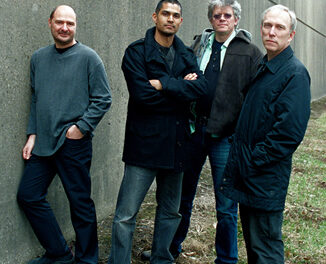If you are a North Carolina dance artist, you probably already know about the NC Dance Festival, founded in 1991 by Greensboro dancemakers Jan Van Dyke and John Gamble to showcase the state’s choreographic talent. But if you are a dance-goer, you may not have heard about this annual, competitive event that pops up for two or three days in Raleigh, Greensboro, Boone, Charlotte and Wilmington. The programs vary slightly by locale, but generally include the same works by the same artists during any given season. The 2012/13 season opened in Meredith College’s Jones Auditorium, and will travel next to Boone.
Friday night’s program was one of the more balanced and accomplished I’ve seen at the NCDF over the years. It opened with the amusing “Blind Date,” an excerpt by Gary Taylor from his work Metropolis for the Winston-Salem Festival Ballet. This fun duet, involving much pantomime and relatively little choreography, was danced by Taylor and Elizabeth Fowle. Rather than working on pointe Fowle used the flat of her feet, making delicious little hops around the stage as the two engaged in a parody of the perils of dating.
How I Learned to Be a Bird, by Meredith College Affiliate Artist Ashley Spears, employed a charming concept, well-executed. Sometimes, at the NCDF, the artists’ reach exceeds their capacity to grasp — there is not much in the way of lighting, the sound isn’t very good, and often student dancers with limited skills appear in the works — but in this piece, all the elements were in harmony. After a short spoken word bit, spoken by a mother bird about learning to fly, the birds do learn. In cream, buff and brown costumes like a clutch of song sparrows, they flutter, tumble and swoop — until they can soar.
The highlight of the evening, not surprisingly, was Magical Cusp, by Gaspard Louis, who danced with Amanda Beatty, to (unspecified) music played by the Kronos Quartet. Louis is a former Pilobolus dancer, and he works at a higher level than is generally seen in the NCDF. One can see the influence of the Pilobolus style, but this work is intimate, personal. Both dancers appear in red, their backs exposed through a web of slits. They enter upstage, she leaning towards him at a 45 degree angle, he cupping her head firmly and pushing forward, so that she must step backwards. Rarely during the dance are they not touching, and their intense gazes lock them together as well. It’s an elegant, powerful dance, very sensual, with a breathtaking overhead lift.
Autumn Mist Belk’s piece, Julep, a little fantasia on Derby Day, did not fare well following Louis’ sophisticated work. Her company, Code f.a.d (film, art, design), always uses a mixed-media approach to performance, and often does intriguing things — but there wasn’t quite enough in the mix here. The film component was weak (with inadequate footage); the music was boring; there were only three dancers, and, there wasn’t much action. The big hats were the best part.
Carol Kyles Finley, professor of dance at Meredith, combined three solo works into one longer piece called Three Downfalls, which was almost uncomfortably affecting. It is hard to watch people fail, especially when there is no want of trying on their parts to succeed. The first two sections involved performers not quite getting it right. The final section “Canned,” set to a Ben Folds song about a man being fired after 25 years, was particularly poignant.
The evening closed with a smooth, strong work by Jan Van Dyke, set to (unspecified) music by Philip Glass. Moving like the music, the five dancers flow and modulate, circling, reversing, piercing, separating, rejoining, circling and spiraling, until simply sinking down into the dark as the music ends. It was a fine ending to a pleasing program.











